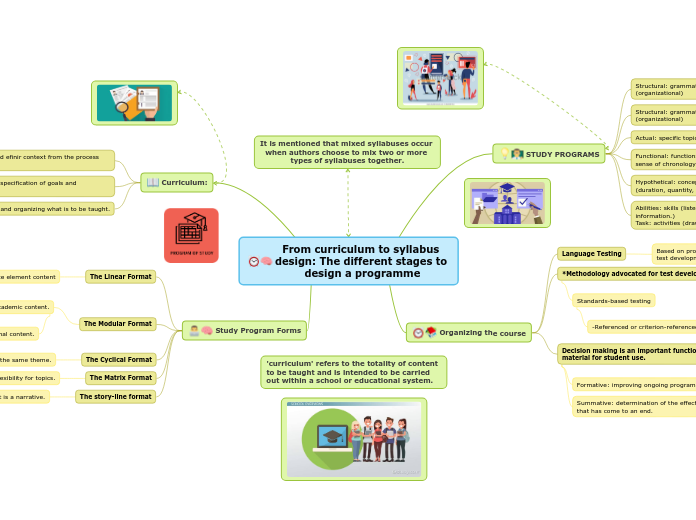'curriculum' refers to the totality of content to be taught and is intended to be carried out within a school or educational system.
It is mentioned that mixed syllabuses occur when authors choose to mix two or more types of syllabuses together.
From curriculum to syllabus design: The different stages to
design a programme
Study Program Forms
The story-line format
It is a narrative.
The Matrix Format
Offers maximum flexibility for topics.
The Cyclical Format
Students and teachers work with the same theme.
The Modular Format
They are integrated into units of academic content.
-Thematic or situational content.
The Linear Format
Is adopted for discrete element content
-Structures
-Grammar
Curriculum:
-Planning and organizing what is to be taught.
- Needs analysis and specification of goals and objectives.
- Articulate beliefs and efinir context from the process base.
Organizing the course
Decision making is an important function as material for student use.
Summative: determination of the effects of a program that has come to an end.
Formative: improving ongoing programs.
*Methodology advocated for test development
Standards-based testing
-Referenced or criterion-referenced text tests.
Language Testing
Based on program goals and objectives
test development
STUDY PROGRAMS
Abilities: skills (listening: ideas, indifferences-seeking information.)
Task: activities (drawing, following instructions, etc.).
Hypothetical: conceptual categories called notions (duration, quantity, location, etc.).
Functional: functions (inform, correct, integrate, etc.) sense of chronology and utility.
Actual: specific topics (health, clothing, food, etc.)
Structural: grammatical and phonological structures (organizational)

